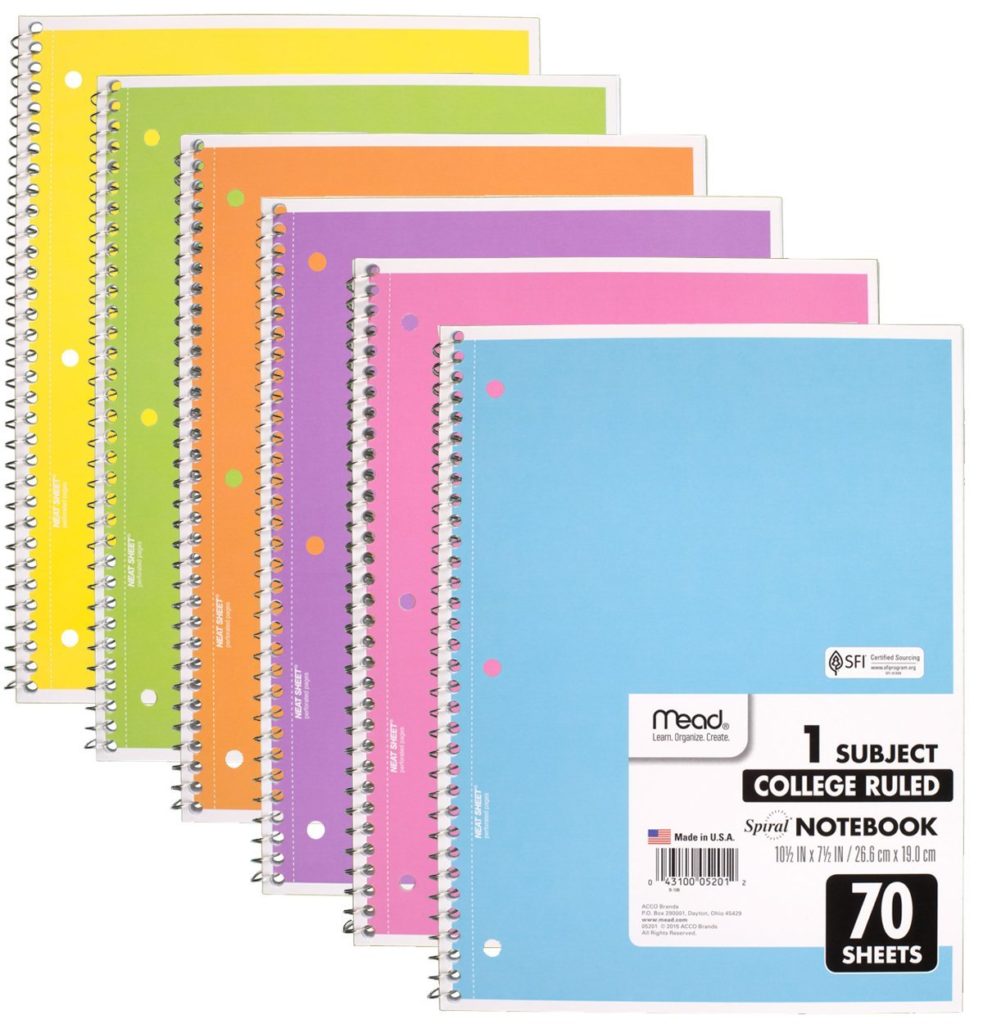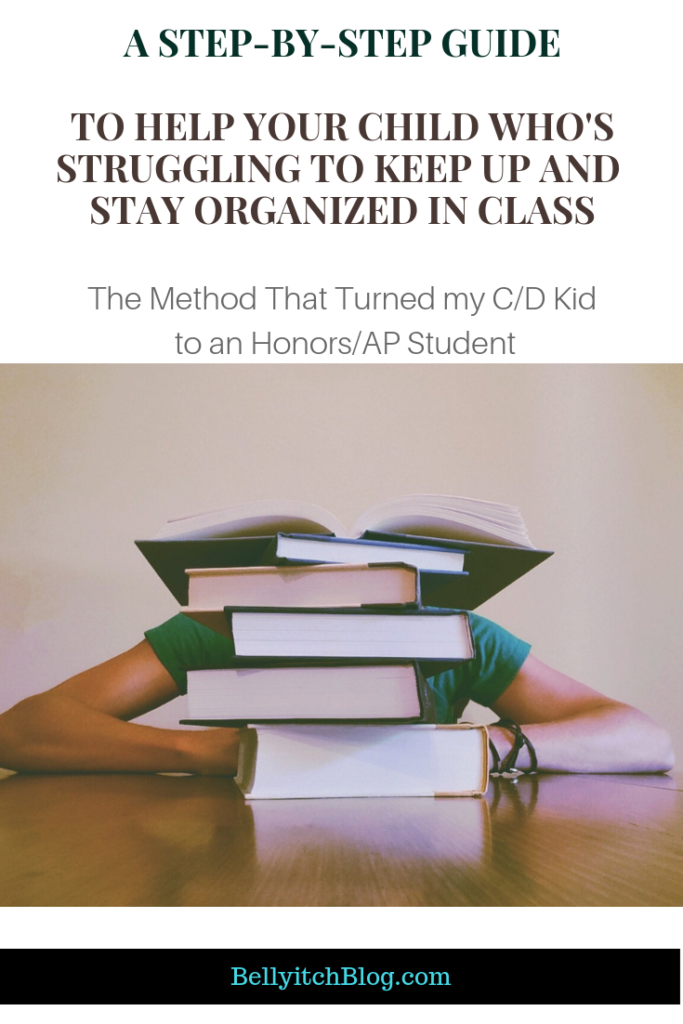

Now that we are well into the new school season, some parents may notice that their child may be having a tough time adjusting and may have started the school year on the wrong foot. He or she might have failed a few quizzes, missed a few homework assignments or lost points on careless or silly errors like failing to give you a syllabus to sign and return.
The transition from elementary school to middle and high school for many children can be challenging, especially for boys. Also, a lot of children, especially young men, suffer from Executive Functioning Disorder which is exhibited in kids who have tough times keeping their papers organized, lose homework, cannot keep up in class or with notes and just struggle with the organization aspect of being a student. These children are not necessarily developmentally delayed and many can actually handle the coursework if only they could get their act together.
When my now 16-year old was 12-years old, he had a had a difficult time managing his time, classes, deadlines and as a result, his grades suffered for almost two years. It took me awhile but I finally figured out part of the root causes of his struggles: he didn’t have organizational study skills, and later he was actually diagnosed with Executive Functioning Disorder.
He isn’t alone, I am sure, especially for kids entering middle school or high school or who are going from the easier and less challenging school or program; or years in school, to the more advanced schooling, or coursework that requires more independent thinking.
Children go from having one teacher who guides them for all of their subjects to having to deal with multiple teachers and classes, numerous binders, folders, notebooks, papers and assignment books.
From one year to the next, they have syllabuses from different classes all with various project, quiz, exams and other deadlines. Class lectures also are different. They require focus to retain the information being taught where before the class is broken up by activities, gym class, outdoor play and lunch. It made learning less stressful.
In middle school, teachers expect more active class participation. It’s not enough to coast quietly. Same can be said of high school, or some private, elite or competitive schools.
Many school children in this stage need a method to help them keep track of their work and to prioritize their assignments and due dates. To help my son, I searched the internet for resources, tips and advice and came up with a system and came up with a plan that worked!
He went from Cs and Ds to honor student! He entered the honors program in high school, got on the Dean’s list and today is taking multiple Advanced Placement (AP) and Honors courses at his school
I am sharing it here for any other parent who may be dealing with a transitioning child who is also having a tough time meeting their school obligations!
ONE BINDER METHOD

Purchase matching color-coordinator two-pocked three-hole punched folders to accompany each subject that will be placed behind each notebook.
In the left pocket of each folder, he will insert his class syllabus for the year or semester or term. The right pocket will be used to hold loose-leaf assignment sheets and info sheets distributed during class.
The notebook should used for note taking on one side of the pages only and dated at the upper right hand corner so he can keep track.
The front first page will be a wipe-able laminated monthly calendar that can be reused each month where your kid will input all quizzes, exams and project deadlines for all classes in one space.
The weekly homework sheets should be hole punched and placed behind the monthly calendar. On that weekly homework sheet, have her jot down homework and other deadlines for each day of the week.
This one binder system should minimize the problem of when your child leaves his book or notes at school thus meaning he will not have them to use to study over the weekend.
Also, this one binder system eliminates the problem of a child with executive functioning disorder who has a difficult time keeping track of handouts and due dates.
All of the papers will all be stored in one location for easy reference.
Also, with this one-binder system, your son or daughter will bring home all the work so you will be able to follow up and double check he or she is staying on track.
OTHER FAMILY ORGANIZATION MATERIALS: This has got to be an entire family effort. For the entire family, for accountability sake and so everyone is tune in to the duties and obligations, and assignments of everyone in the household, use or repurpose the following:
A Large Central Family Calendar to hang in the kitchen or family room where everyone can see it.
On this large calendar, put important dates including vacations, birthday parties, doctor’s appointments on it but also test, project due dates and quiz dates.
If you have more than one child, like we do, dedicate a different colored marker color for each child and family member so they can easily see what applies to them with a glance.
This large calendar may help your child or children organize in their mind(s) as well as let you know who has what exam coming up or assignment due and when too.
Update it weekly with field trips, school activities, out-of-school sports and activities, dance and music rehearsals etc.
A Storage Bin: Get a bin with multiple compartments that can store paper, notebooks, blank flash cards, pencils, pens, markers, crayons, staples, glue, scissors, compasses, protractors, rulers and all the materials that may be needed for homework or a short project. It takes away the time wasted looking for a sharp pencil that children use as an excuse to procrastinate from starting. Have this storage bin be located in the designated study area or nook in your home.
A Weekly Calendar: Like the monthly calendar, the weekly calendar should be updated each Sunday before the new week with tests, quizzed and other due dates. . Have your kid or kids review your class notes from the previous week to see if you need to add any school activities.
Timer: Use a timer on your smart phone and set it for 15-20 minutes of uninterrupted study, then allow for 5-10 minutes of break to help a child who has a tough time concentrating and working non-stop. You can also purchase a timer just for this purpose.
It’s also great for kids who have or are borderline ADD/ADHD and/or have executive functioning disorder.
Daily To-Do List: Some children need daily reminders of what to do each day and even though you tell them, they forget.
Having a fixed daily schedule up on or near the fridge in the kitchen or other heavily traveled area is a good idea.
Ours include minutiae: Bathe, brush teeth, put on deodorant, dress, brush hair, eat breakfast; and after school and after library: undress, hang up uniforms, dinner, get forms signed, pack backpacks and knapsacks for the next day and leave by door, unpack lunchboxes and dump uneaten stuff and trash, warm milk, reading or practice instrument, quick study, bedtime.
PLAN FOR CREATING BETTER STUDENTS
Now with all the tools in place, here is the plan for creating a better studier and test taker:
Traveling to School
For those who drive their kids to school daily, you can start out with the morning news or music program on as the kids fuss and fight in the back, but getting closer to school, cut it all out and give your kids a pep talk and say a prayer, meditate or a few affirmative words so they are prepared for the day. (depending on your beliefs).
A pep talk I gave recently did the trick to empower my son to be more independent and seek assistance from his teacher on a certain missed task on his own. Score one for mom!
For non-drivers, try to carve out a few moments before the school bus arrives or heading out on your public transportation commute to do the same.
Encouraging Classroom Focus and Participation Skills
Talk to your child about the importance of being cognitively ready to listen during class. If they have all their assigned work and readings completed before each class, they will be better equipped to participate and pay attention.
I instructed my son to spend the first few moments before class begins to review his notes from the previous day for a refresher and to prepare for what’s next.
Having that information fresh in his head hopefully will encourage him to raise his hand when questions are asked and to participate during oral call and response time.
Take Notes. It is important to take good notes in class.
Taking written notes almost forces a child to concentrate on what the teacher is saying. Notes, of course, also help them prepare for tests and provide clues as to what their teacher thinks is most important for your child to know.
Further, notes will contain information that may not be in the textbooks.
Here are some notetaking tips to pass on:
Write the date at the top of each page of your notes and number the pages. This will help you to keep your notes in the proper sequence.
- Keep your notes for each class separate from your notes for other classes. You can use different color tabs to help you do this.
- Be selective in what you write. On average, the speaking speed of teachers is five to six times faster than is the writing speed of students. Quite simply, do not try to write everything your teacher says.
- Use abbreviations and symbols to increase your notetaking speed.
- Don’t be too concerned with spelling and grammar. These notes are for your use and will not be graded.
- Ask your teacher to repeat something you think you may have missed.
- As you write points made by your teacher, translate these points into your own words. Doing this will increase your understanding of your notes and your ability to remember the information they contain.
- If your teacher provides a definition for a word, write that definition in your notes word for word!!!!
- Write legibly. You will have to read your notes later on.
- Include in your notes information your teacher writes on the board.
- Stay especially alert during the last few minutes of the class. Teachers sometime use the last few minutes of a class session to cram in everything they wanted to cover but didn’t.
- Use Abbreviations
AFTER SCHOOL: HOMEWORK & STUDY
The most important part of getting good grades is completing homework assignments and studying for quizzes and tests.











